Wildfires, iPhone M10 & M12 Globular Clusters,
Virgo Galaxies viewing
Posted: 9 June 2020
Cloudy skies returned on Thursday, 4 June 2020. Overnight Friday, 5 June, and Saturday, 6 June, had a brief thundershower (0.05" rain). The sky dawned clear Saturday morning, but smoke from two overnight lightning-caused wildfires (not close) was in the western sky most of the day (left webcam image; Tortolita Fire) and in the southern sky late in the afternoon (right webcam image; Bighorn Fire).
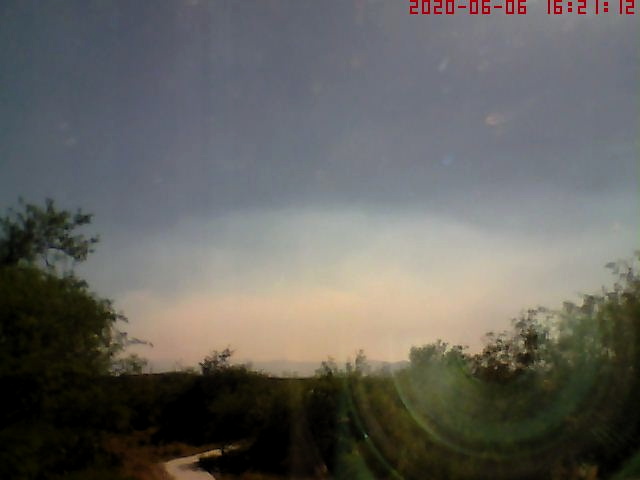

About an hour before sunset I went outside to take some photos of the smoke. It was then that I decided to skip going to the observatory that evening as there was just too much smoke in most of the sky. And I could smell it. The top photo below (D850 DSLR with 600mm lens, cropped) is of the smoke from the Tortolita Fire (about 20 miles southwest of Oracle); the bottom photo (iPhone) is the view of the southern sky with the smoke from the Bighorn Fire (about 15 miles south of Oracle).
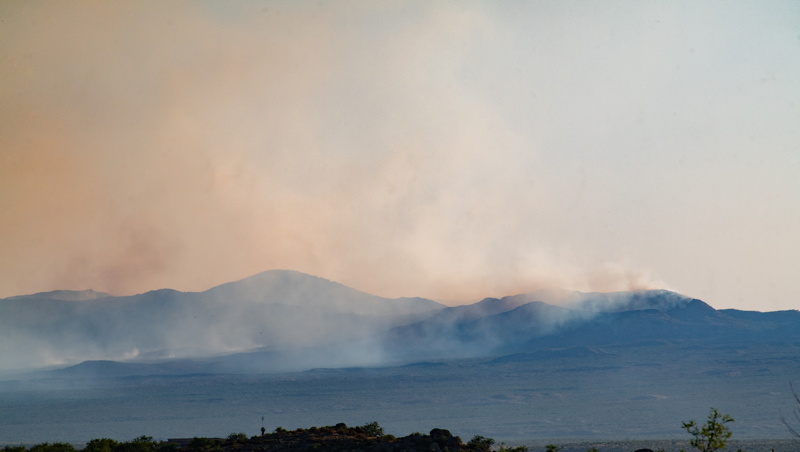
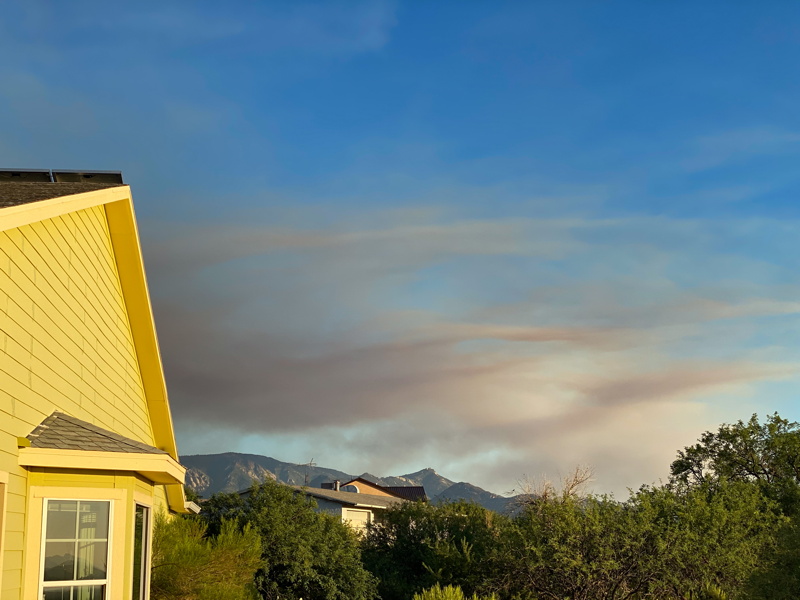
After the sun set the fire in the Tortolita Mountains was visible. (D850 DSLR with 600mm lens, cropped.)
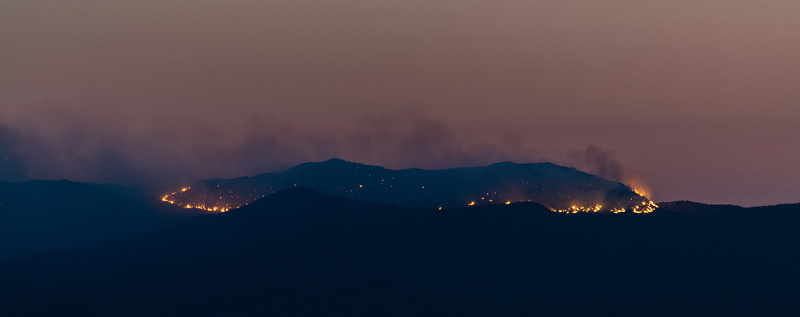
Click or tap on image for larger version
Sunday, 7 June, dawned clear but the sky was still smokey. The Bighorn Fire increased to 1700 acres and the Tortolita Fire to 3500 acres on Sunday. There was strong wind during the daytime hours. The smoke was visible Sunday afternoon to the north, east, south, and west (CW in the images below).
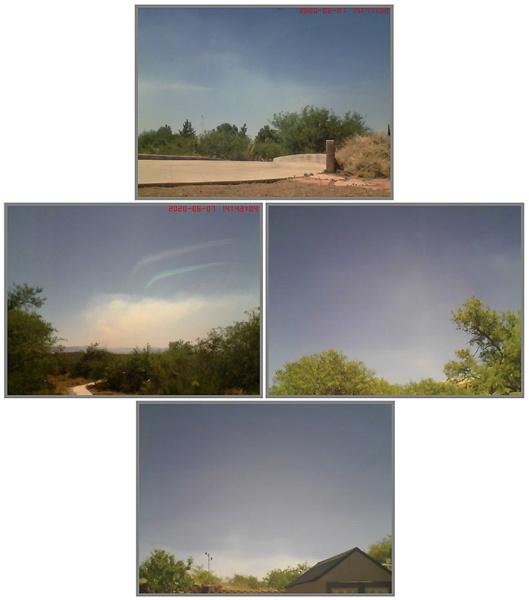
Monday, 8 June, dawned clear and calm with less smoke in the sky. The Bighorn Fire increased to 2550 acres overnight with 10% containment during the day. The Tortolita Fire is 25% contained. The wind picked up during the daytime, but the direction had changed and blew the smoke from both fires to the south.
Fifty years ago on 8 June 1970 I was proud to receive my B.S. Degree in Astrophysics from Indiana University College of Arts & Sciences. During my four years as an IU undergraduate student I worked on the Department of Astronomy Asteroid Program. Great education. Great memories.
|
Open: Monday, 8 June 2020, 1839 MST Temperature: 85°F |
Session: 1489 Conditions: Mostly clear, some smoke, breezy |
Equipment:
12" f/8 LX600 w/StarLock
2" 24mm UWA eyepiece
2" 5.5mm 100° eyepiece
2" 30mm eyepiece
1.25" 15mm eyepiece
2" 14mm 100° eyepiece
Camera:
D850 DSLR
iPhone 11 Pro Max
1848 MST: LX600 ON, StarLock OFF, High Precision OFF.
1850 MST: slewed the 12" telescope to Mercury. Not yet visible.
Saw this fire suppression aircraft on the way to the Bighorn Fire at a distance. D850 DSLR FL 300mm (cropped).
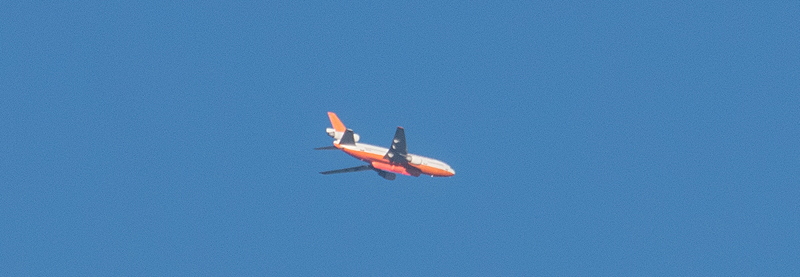
1933 MST: sunset. Calm now.
1948 MST: viewed Mercury, 12x50 binoculars.
1951 MST: viewed Mercury, 102X and 443X. View hampered by clouds and low elevation in the sky.
2004 MST: slewed to M5 (globular cluster). Not yet visible against bright twilight sky.
2008 MST: M5 now faintly visible, 81X.
2038 MST: viewed the globular clusters M5, M10, and M12, 163X.
Mounted the iPhone 11 Pro Max on the 15mm eyepiece using the Levenhuk adapter.
2055 MST: StarLock ON.
Took these afocal 163X images using NightCap Camera (Long Exposure, Light Boost, ISO 12500, 1 sec, 1 minute, 1X lens).
M10
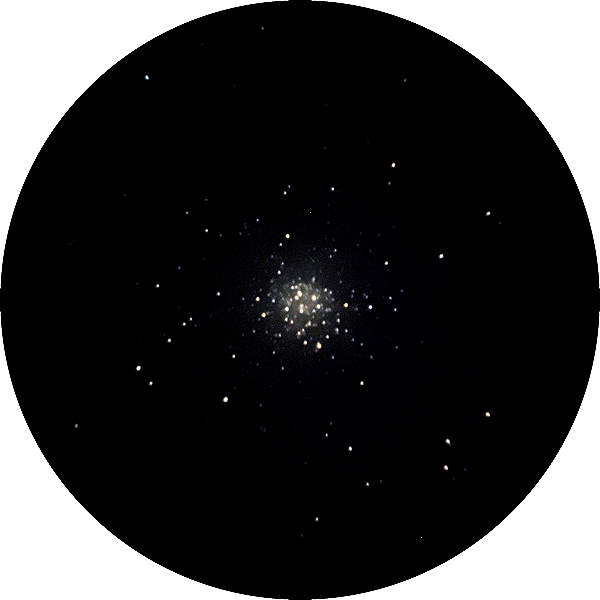
M12
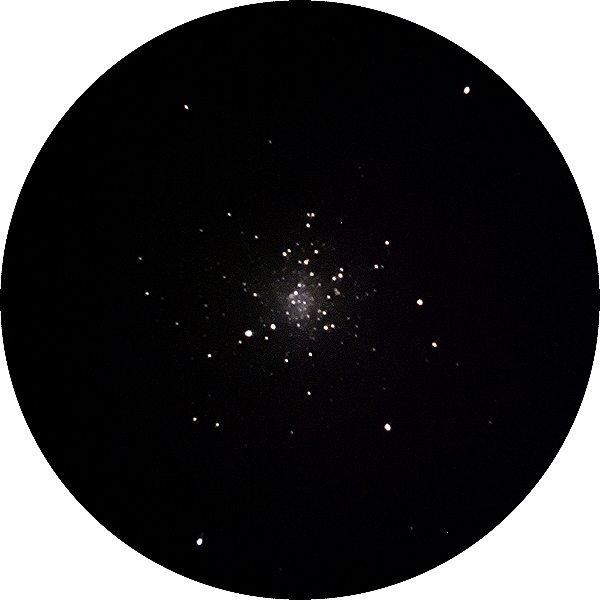
Some thin clouds caused autoguiding issues at times.
2110 MST: StarLock OFF.Viewed M4 (globular cluster), 163X, 81X, and 174X.
2121 MST: began viewing galaxies in the Virgo Galaxy Cluster, 174X: M84, M86, NGC4435, NGC4438, NGC4461, NGC4473, NGC4477, M88, M87, NGC4429, NGC4503, NGC4567/NGC4568, NGC4564, M58, M89, M90, M91, and several others. The views with the Explore Scientific 2" 14mm 100° eyepiece were very nice.
2156 MST: LX600 OFF.
2206 MST: took a Sky Quality reading, likely affected by some smoke and thin clouds.
|
Close: Monday, 8 June 2020, 2211 MST Temperature: 61°F |
Session Length: 3h 32m Conditions: Clear?, SQM 21.28 |
Comments are welcome using Email. Twitter users can use the button below to tweet this report to their followers. Thanks.
Cassiopeia Observatory Home Page
Copyright ©2020 Michael L. Weasner / mweasner@me.com
URL = http://www.weasner.com/co/Reports/2020/06/09/index.html

